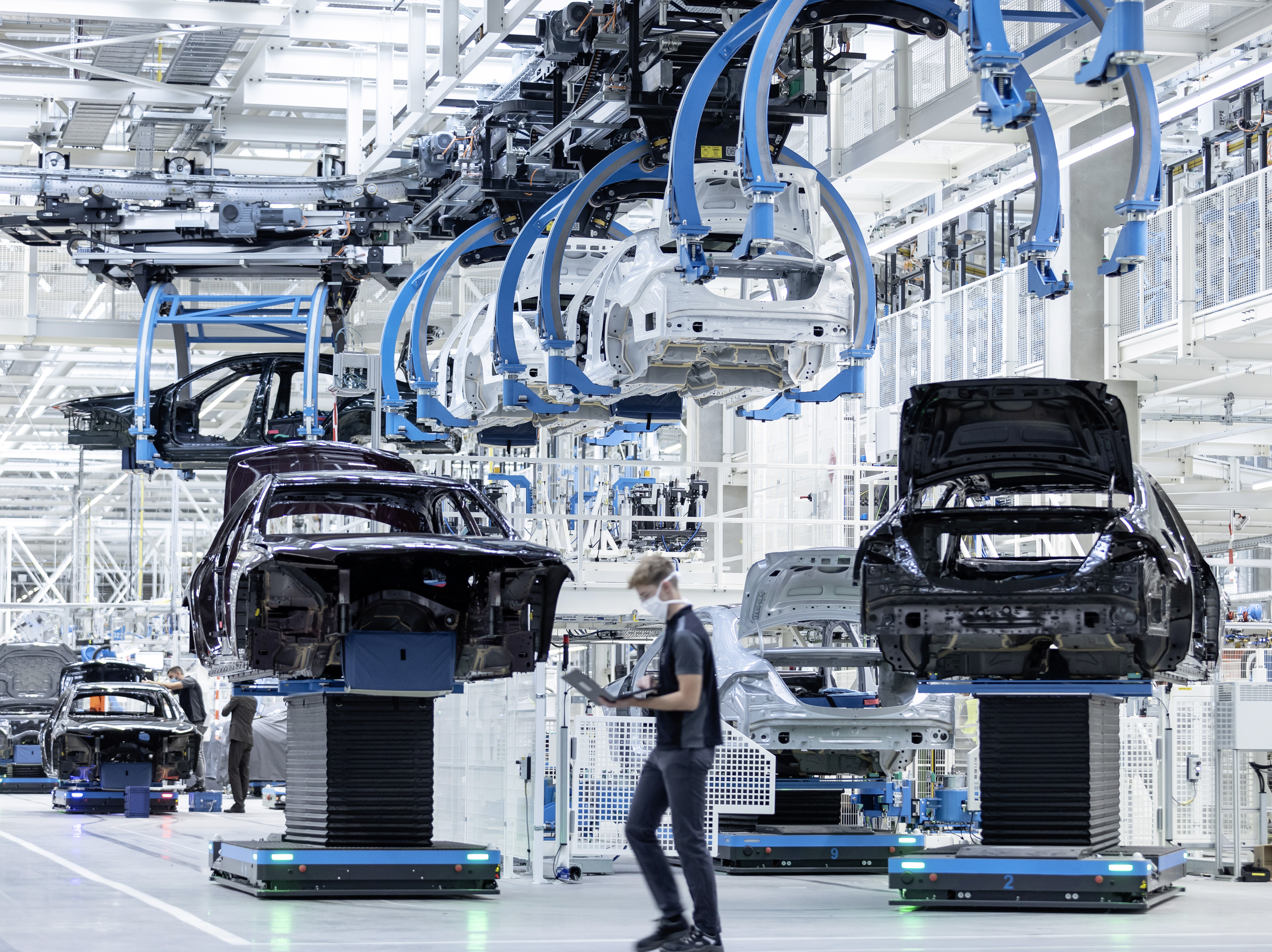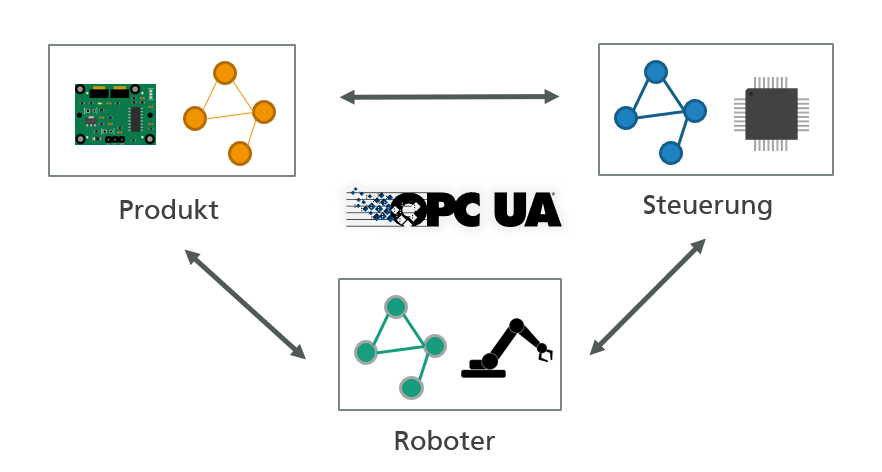Short description of the project
A central requirement for future production systems is that they are easily expandable and capable of change. This will enable them to react flexibly to rapid product generation changes, individualisation requests or unforeseeable sales fluctuations. In this context, it is crucial that adaptations to a production plant entail as little adjustment effort as possible on the part of the planning and control system.
In this context of flexible, modular and self-organising production, the SWAP lighthouse project (heterogeneous, workload-optimised robot teams and production architectures) shows how production control is changing from centralised to decentralised control, all the way to hierarchical swarms whose participants work together collaboratively and (partially) autonomously.
Project goals and contribution of Fraunhofer IOSB
In today's common architectures, standardised OPC UA information models enable machine data and runtime parameters to be provided to the higher-level IT systems, e.g. MES. For the next step towards further modular, adaptable production, the interaction between the plants and the process control must also be manufacturer-independent.
At Fraunhofer IOSB, the architecture for mapping and controlling the plants is being designed and developed. The foundation of the communication is a flexible and expandable data hub based on the OPC UA standard.
Based on this, an “execution engine“ is being developed. This takes over the sequence control and coordination and can be regarded as a generic process control. This approach enables flexible reconfiguration or replacement of systems without time-consuming adjustments to the process control system. The execution engine is based on the OPC UA standard.
 Fraunhofer Institute of Optronics, System Technologies and Image Exploitation IOSB
Fraunhofer Institute of Optronics, System Technologies and Image Exploitation IOSB 
